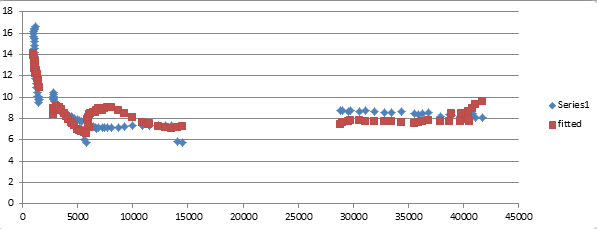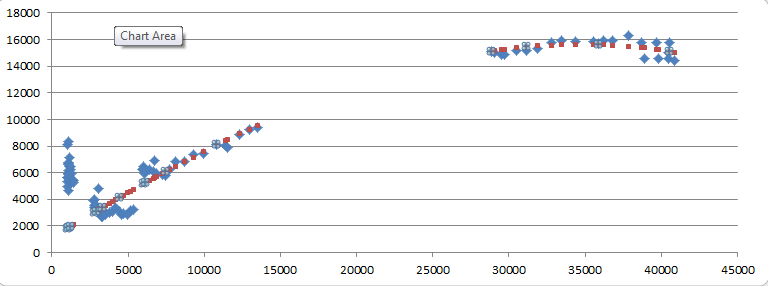The ABC Murders by Agatha Christie
My rating: 4 of 5 stars
Before starting Christie’s The ABC Murders, I made the mistake of opening another book, Win, by the much overrated Harlen Corben. I abandoned after only 20 pages, and frankly only got that far because I was intrigued to know if a bestselling author could sustain that incredibly low level of writing beyond one ill-conceived chapter. So it’s probable that my high opinion of The ABC Murders is somewhat flattered by this comparison.
Still, the contrast between what sells today and what sold 70 years ago could not have been more apparent. Both Christie’s and Corben’s protagonists are cliched and superficial. Yet whereas Hercule Poirot’s arrogant self-importance is tongue-in-cheek (the reader is in on the joke), Win is simply insufferable. Christie’s characters lack depth because they are clever and deliberate illustrations – line art that indicates form rather than creating true texture. Corben’s characters, on the other hand, lack depth because they are badly painted hyperreal portraits, a poor likeness of actual human beings.
But where Christie really shows her mastery is in the pacing of the plot. I’m curious to know if she mapped out the sequence of murders and events carefully, the way an animator plans his drawings from pose to pose. Or did she just let it flow – frame by frame – and was so adept at feeling her way that the result was perfect timing – landing on the beats without the aid of a metronome?
Whether deliberate and practiced; or innate and lucky, the effect is that the reader feels loved by every page. Christie knows how to write with her readers in mind. You cannot hear the pounding of her fingers on the typewriter. There are no painfully obvious sequences of the otherwise cynical title character funding a shelter for battered women, sardine-packed in there by an editor because someone felt the protagonist had to be made more ‘likeable’. With the Queen of Crime, there is a simple love of the story, and a flair for sketching human beings – not perhaps as they really are, but with enough truthful lines that we, the reader, can fill in the gritty details with our imagination.
Hercule Poirot remains in The ABC Murders as he always is – larger than life. Preposterous, even. A shared joke between Christie and the reader. And yet he is as alive as any hero.
Agatha Christie will never be the Rembrandt of literature. But she is perhaps the Norman Rockwell, and that is a wonderful thing in itself.
View all my reviews
Month: January 2023
Subliminal messaging – a novel conspiracy theory
A plandemic or a spamdemic?
I am still recovering from Covid. I think most of us are. By this, I certainly do not mean the effects of the SARS-2 virus on my body. That is not what ‘Covid’ is. Covid was and is a social construct. A state of mind that has variously been described by fellow critical thinkers as the result of mass psychosis, religious zealotry or the nefarious actions of a highly organised conspiracy.
Indeed, there is a lively debate in the community as to the extent to which many of the terrible outcomes were centrally planned, or were the result of an organic, systemic failure of our society to cope with a stress factor. Eugyppius, the German critical thinker whose substack is something of an authority on all matters covidian, flies the flag for system failure – pinning the blame squarely on the ineptitude of the technocratic managerial class that holds the real power in Western countries. Others point to damning evidence of the involvement of globalist elites, aligned to the World Economic Forum, in planning a so-called Great Reset.
Conspiracy theorists have more time on their hands than conspiracists
Personally, I have always aired closer to Eugyppius’ scepticism regarding the utility of tin foil hats. My own experience in proximity to ‘power’ has taught me that those who are thought to hold its reigns spend most of their time chasing after their own manic agendas. They barely have time to read the briefings that are shoved at them as they board airplanes – much less to craft the narratives that inform those briefings, in service of some conspiratorial purpose.
And yet, it cannot be denied that certain actors within the technocracy are motivated to play a key role in steering outcomes. Laura Dodsworth’s excellent ‘A State of Fear’ details how the UK government did exactly that, (though it stops short of providing a smoking gun motive for their actions – leaving open the possibility that the fear-inducing psy-ops perpetrated against the civilian populations were motivated by a misplaced yet well-intentioned belief in their necessity). Likewise, the Fauci emails and the Twitter Files clearly show deep and hidden linkages between the scientific
establishment, government and Big Tech, all acting in a way that shores up their respective power positions and bottom lines – the very essence of a conspiracy.
A novel conspiracy hypothesis
In this post, I would like to veer a little further away from Eugyppius’ position and down the rabbit hole of conspiracy theorising, with what I believe is a novel contribution to the saturated market of tin foil headwear. As the great Sherlock Holmes once remarked, we can sometimes learn more from a dog that does not bark in the night, than from listening to the ones who do. I say this because when I was a boy in the early 1980s, the talk was all about the use of subliminal messaging in advertising, spurred on by a 1970s book called Subliminal Seduction. Advertisers had discovered that they could splice in a single still frame into the middle of a video image – say, a nice refreshing bottle of Coke. The result would be that the conscious eye and mind did not perceive the embedded image or the ‘Drink Coke’ slogan. However, tests showed that when this was done, it had a very strong impact on the subconscious desires of those subjects exposed to the subliminal image. Those who had ‘seen’ the spliced-up video expressed a much greater preference for Coke.
The subliminal messaging was found to be so effective precisely because it did not register a conscious response. The subject’s usual mental defences against the effects of overt advertising did not kick in.
Naturally, there was no small degree of uproar. Advertisers rushed to assure a worried public that they would never engage in such underhand tactics, the FCC intervened in the public interest, and soon the story faded from the public eye. It was understood that whatever short term gains a product could achieve in this way would be more than undermined by the reputational damage of getting caught doing it. And because the same subliminal image would be diffused millions of times to TV sets across the country, it was sure that they would in fact get caught doing it.
Mind tricks in the digital age
That was then. Now imagine the same technology being used on tech platforms. Imagine the ability to splice in a single message into a gif or video clip on Facebook, YouTube, Twitter or TikTok. Now imagine that the efficacy of that message was powered not just by generic 1980s Madison Ave advertising trickery, but by custom-generated user data and algorithms that allowed the messenger to craft ‘the perfect’ subliminal message for each and every user. For example, imagine the cute cat video you just watched had, cut into it, a 1:24 frame image of a Covid virus and the words ‘Stay home or you will die the way your mother died last August’, when in fact your mother had died last
August. What chances would you have of not being scared to death of Covid?
Big Brother isn’t watching you, you’re watching him
There is absolutely no doubt that this technology exists and that it could be deployed. Since the release of the Twitter Files, there is also little doubt that the government – or at least that part of it Glenn Greenwald refers to as the US Security State – has infiltrated Big Tech platforms to a sufficient degree to be able to undertake such an operation.
Of course, I will take my tin foil hat off long enough to admit that I have not a shred of evidence for any of this. But given how effective we knew it to be even without customisation, what are the chances that subliminal messaging is not being used in the Tech Age? And to return to Holmes’ dictum, if it is being used, why have we not heard more night-time barking from this particular dog?


